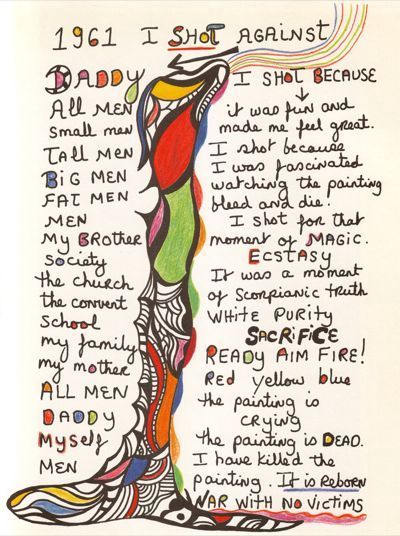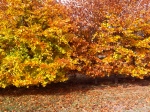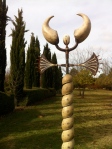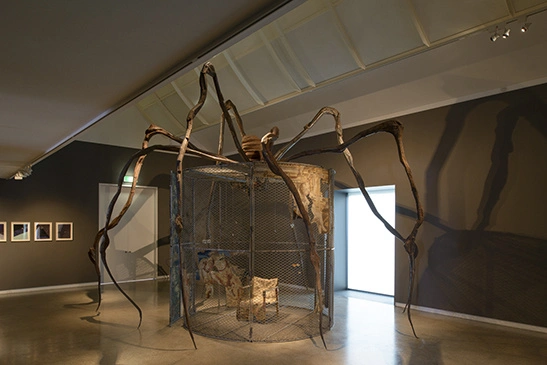I recently came across an 80 year old female artist I’d never heard of. She was a pioneer of the feminist art movement in the 1960s and 70s in the US.
Her early working life was lonely and she was mostly broke. “I didn’t make myself an outsider,” she says. “The art world made me an outsider. Of course, isolation is essential to the creative act. You have to be with yourself, with your ideas. Virginia Woolf talked about it as fishing: you sit on the shore, you drop your line, and you wait for the fish to jump. But I also had to protect myself from the craziness, all the antagonism, around me. It was difficult. I’m not going to say it was anything else. Not everybody could have managed it.”
What did she sacrifice along the way? “Children. There was no way on this earth I could have had children and the career I’ve had. But you know what? I don’t care how much I had to give up. This was what I wanted. You have to make choices. You can’t have everything in life.”

As for her elaborate 1979 megasculpture The Dinner Party, a provocatively feminist work which celebrates the lives and work of 1,038 notable women, you can forget what the critics say (the late Robert Hughes called it: “Mainly cliché… with the colours of a Taiwanese souvenir factory”; Hilton Kramer of the New York Times called it: “Very bad art… failed art… art so mired in the pieties of a cause that it quite fails to capture any independent artistic life of its own”
With three retrospective exhibitions in the UK in 2012 and increasing acclaim for her work in the past decade, she has finally achieved the respect she deserves. Her famous work The Dinner Party comprises triangular table laid with 39 place settings, each one designed to reflect the accomplishments of a woman – included are Hildegard of Bingen, Mary Wollstonecraft and Virginia Woolf. Beneath the table is a ‘heritage floor’, the names of a further 999 women (Catherine of Aragon, Colette, Clytemnestra) inscribed on its tiles. It sounds uncontroversial, celebrating, as it does, the history of women through applied arts such as embroidery and china painting. But then you look at the plates. Each one is decorated with a symbol that resembles a vulva. Depending on your point of view, this is either reductive, vulgar and semi-pornographic, or it’s celebratory, taboo-breaking and bracingly political.
The piece I love most is a fireworks installation ‘A butterfly for Brooklyn‘ she made in 2015.
Art-world statistics, in particular, still make for depressing reading. Work by women artists comprises just 3–5% of major permanent collections in the US and Europe. “It’s alarming. In our institutions, women are still an add-on to a male-centred curriculum,” she says.
Quotes from https://www.theguardian.com/artanddesign/2012/nov/04/judy-chicago-art-feminism-britain





























 Yayoi Kusama, Dreaming pumpkin, 2012
Yayoi Kusama, Dreaming pumpkin, 2012





